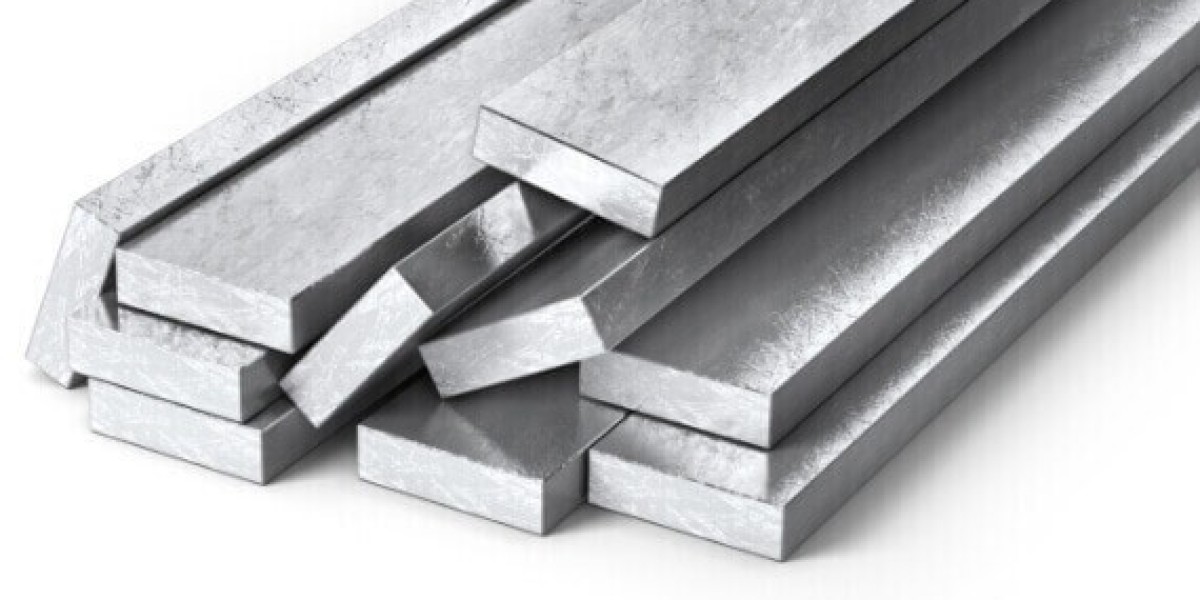Steel bar are fundamental to construction and industrial projects, serving as essential reinforcement elements that enhance the strength, durability, and structural integrity of buildings, bridges, and other large structures. They come in various types, grades, and sizes, each suited to specific applications and requirements. With the growing emphasis on infrastructure development and urbanization, the demand for steel bars continues to rise, making them an indispensable material in construction.
In this article, we’ll explore the types, uses, benefits, and key considerations when selecting steel bars for projects.
Types of Steel Bars
Steel bars are available in different types based on their manufacturing process, composition, and intended use. The main types include:
TMT Bars (Thermo-Mechanically Treated Bars)
TMT bars are one of the most popular types of steel bars in construction. They are known for their high tensile strength, ductility, and corrosion resistance. The thermo-mechanical treatment process imparts a hard outer layer while maintaining a softer core, providing excellent flexibility and resistance to bending and breaking under stress.
Applications: TMT bars are widely used in residential, commercial, and industrial buildings, bridges, and highways. They are particularly valued in earthquake-prone areas due to their flexibility and strength.
Mild Steel Bars
Mild steel bars are made from low-carbon steel, which gives them good tensile strength but less flexibility compared to TMT bars. They are typically plain and uncoated, making them ideal for applications that require reinforcement but are not exposed to high levels of stress.
Applications: Mild steel bars are used in various construction projects, including beams, columns, and slabs, particularly in areas where strength is more important than flexibility.
Deformed Steel Bars
Deformed steel bars have a ridged or grooved surface, which helps them bond better with concrete. This strong bond prevents slippage, ensuring greater strength and durability in reinforced concrete structures.
Applications: These bars are commonly used in high-stress applications, such as dams, towers, and large bridges, where enhanced bonding with concrete is essential.
High-Strength Deformed Bars (HSD Bars)
HSD bars are an advanced type of deformed steel bar that provides superior strength and corrosion resistance. They have high tensile strength and enhanced durability, which makes them ideal for demanding construction projects.
Applications: HSD bars are often used in infrastructure projects, high-rise buildings, and structures exposed to harsh environmental conditions.
Key Uses of Steel Bars in Construction
Reinforcing Concrete
Steel bars reinforce concrete in beams, columns, slabs, and foundations, providing added strength to withstand heavy loads. In this way, steel bars enable the construction of larger and more complex structures.
Building Bridges and Highways
The high tensile strength of steel bars makes them ideal for infrastructure projects, particularly bridges and highways. Steel-reinforced concrete in these projects enhances stability, ensuring that structures can endure heavy loads and traffic.
Construction of High-Rise Buildings
Steel bars are vital for high-rise buildings as they provide the strength and stability needed to support the weight of multiple floors. They also ensure that buildings can withstand wind and seismic activity, making them safer in disaster-prone areas.
Water and Sewage Systems
In construction projects involving water tanks, reservoirs, and sewage systems, steel bars reinforce concrete structures to prevent cracking or deformation due to water pressure or soil movement. Steel bars in these projects also help protect against corrosion, especially when used with anti-corrosion coatings.
Benefits of Using Steel Bars
Strength and Durability
Steel bars significantly increase the load-bearing capacity of concrete structures, providing durability and stability that allows them to support heavy loads. This is especially important in large-scale infrastructure and commercial buildings.
Corrosion Resistance
Many steel bars, such as TMT and HSD bars, are treated to resist corrosion, extending the lifespan of the structure. Corrosion resistance is particularly important in coastal areas or environments exposed to moisture and chemicals.
Flexibility
TMT and certain other steel bars offer flexibility that prevents cracking under pressure. This flexibility is essential in areas prone to seismic activity, as it allows buildings to absorb and distribute the force of an earthquake without major damage.
Ease of Fabrication and Installation
Steel bars can be easily bent and shaped to fit the specific requirements of a construction project. This makes them easier to work with and allows for faster construction times, which can reduce labor costs.
Sustainability
Steel is a recyclable material, making steel bars an eco-friendly choice. Using steel in construction projects reduces the demand for new materials and minimizes environmental impact.
Choosing the Right Steel Bars for Your Project
When selecting steel bars for a construction project, it’s essential to consider several factors to ensure you’re choosing the best type for your needs:
Grade and Strength
Different steel bars come in various grades, with TMT bars generally classified into Fe 415, Fe 500, Fe 550, and Fe 600. The grade indicates the tensile strength of the bar, with higher grades being suitable for projects that require more load-bearing capacity.
Corrosion Resistance
If your project is in a coastal area or an environment prone to high moisture levels, consider using corrosion-resistant bars, such as TMT or HSD bars with anti-corrosion coatings.
Flexibility Requirements
For projects in seismic zones or high-stress applications, flexibility is essential. TMT bars are a preferred choice in such cases because of their ability to withstand bending without breaking.
Size and Diameter
Steel bars come in various diameters, generally ranging from 8 mm to 32 mm. Choosing the appropriate size depends on the structural requirements of the project, with larger diameters typically providing more strength.
Budget
While high-grade steel bars like HSD and TMT bars may have higher upfront costs, they offer long-term durability and stability.
Conclusion
Steel bars are integral to the strength and safety of any construction project, serving as the primary reinforcement material that supports and stabilizes structures. Their durability, tensile strength, and flexibility allow buildings and infrastructures to withstand stress, load, and environmental forces. Selecting the right type and quality of steel bars is crucial to ensuring that a structure is both secure and long-lasting.
If you are looking for best quality steel online, please visit our website : www.steeloncall.com or you can contact us through our toll-free number: 18008332929







